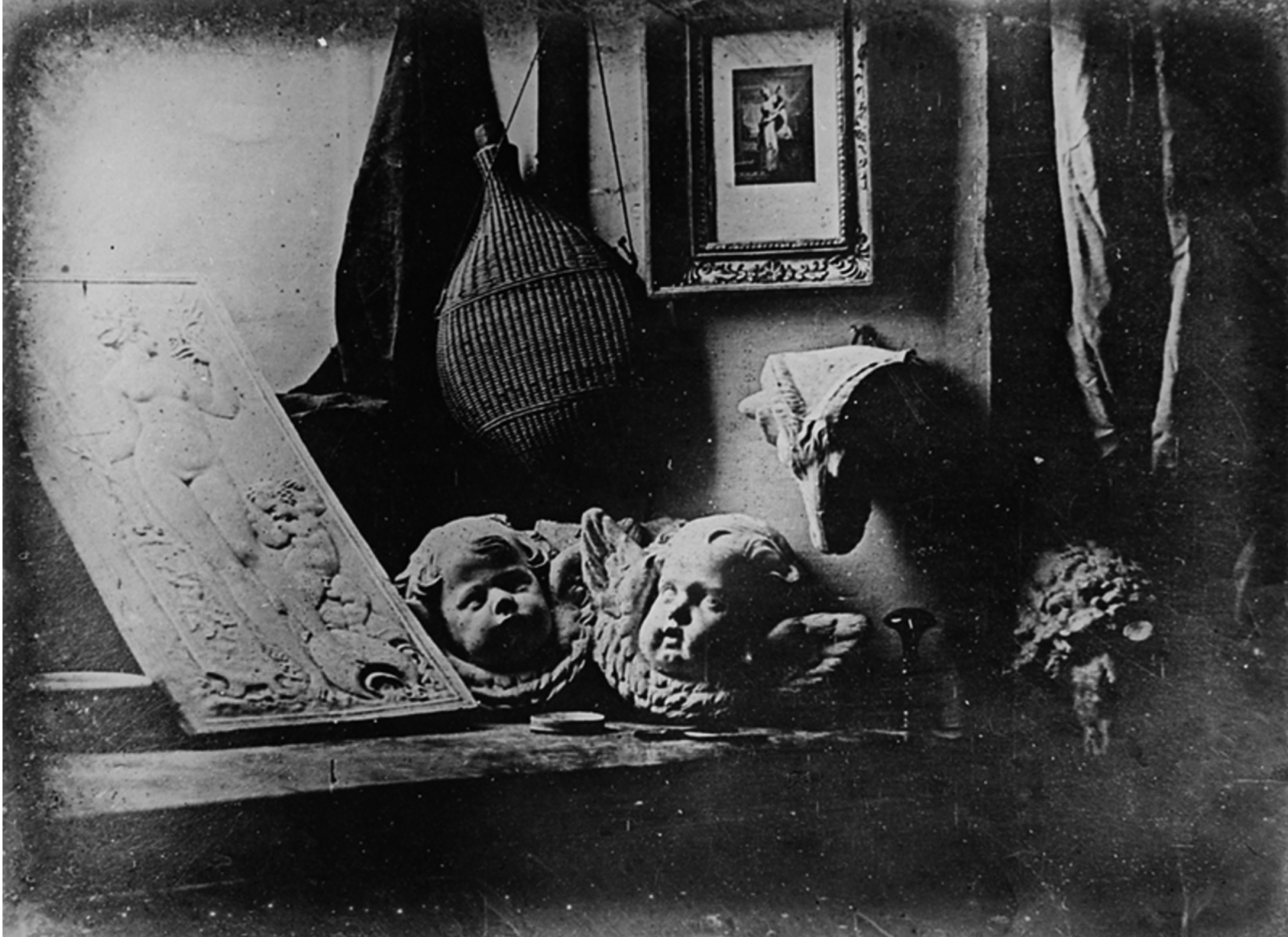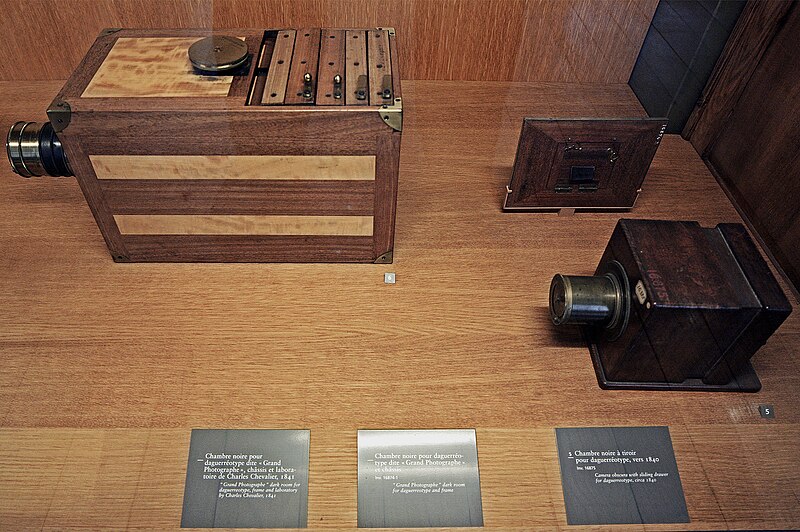The daguerreotype (French: daguerréotype) was the first commercially successful photographic process. The image is a direct positive made in the camera on a silvered copper plate. The raw material for plates was called Sheffield plate, plating by fusion or cold-rolled cladding and was a standard hardware item produced by heating and rolling silver foil in contact with a copper support. The surface of a daguerreotype is like a mirror, with the image made directly on the silvered surface; it is very fragile and can be rubbed off with a finger, and the finished plate has to be angled so as to reflect some dark surface in order to view the image properly. Depending on the angle viewed, and the color of the surface reflected into it, the image can change from a positive to a negative.
First Daguerreotype Invention Invention
Since the late Renaissance, artists and inventors had been looking for a mechanical method of capturing visual scenes.Previously, using the camera obscura, artists would manually trace what they saw, or use the optical image in the camera as a basis for solving the problems of perspective and parallax, and deciding colour values. The camera obscura's optical reduction of a real scene in three-dimensional space to a flat rendition in two dimensions influenced western art, so that at one point, it was thought that images based on optical geometry (perspective) belonged to a more advanced civilization. Later, with the advent of Modernism, the absence of perspective in oriental art from China, Japan and in Persian miniatures was revalued.
Previous discoveries of photosensitive methods and substances—including silver nitrate by Albertus Magnus in the 13th century, a silver and chalk mixture by Johann Heinrich Schulze in 1724, and Joseph Niépce's bitumen-based heliography in 1822 —contributed to development of the daguerreotype. In 1829 French artist and chemist Louis J.M. Daguerre, contributing a cutting edge camera design, partnered with Niépce, a leader in photochemistry, to further develop their technologies.
After Niépce's 1833 death, Daguerre continued to research the chemistry and mechanics of recording images by coating copper plates with iodized silver.Early experiments required hours of exposure in the camera to produce visible results. In 1835 Daguerre discovered—after accidentally breaking a mercury thermometer, according to traditional accounts—a method of developing the faint or invisible images on plates that had been exposed for only 20 to 30 minutes. Further refinement of his process would allow him to fix the image—preventing further darkening of the silver—using a strong solution of common salt. The 1837 still life of plaster casts, a wicker-covered bottle, a framed drawing and a curtain—titled L'Atelier de l'artiste—was his first daguerreotype to successfully undergo the full process of exposure, development and fixation.
The French Academy of Sciences announced the daguerreotype process on January 9, 1839. Later that year William Fox Talbot announced his silver chloride "sensitive paper" process. Together, these announcements mark 1839 as the year photography was born.
Daguerre did not patent and profit from his invention in the usual way. Instead, it was arranged that the French government would acquire the rights in exchange for a lifetime pension. The government would then present the daguerreotype process "free to the world" as a gift to mankind, which it did on August 19, 1839. However, on August 14, 1839, Miles Berry, acting on Daguerre's behalf, filed for a patent in England, which consequently became the only place on Earth where the purchase of a license was legally required.
1840-1841 Camerae obscurae and plates for Daguerreotype called "Grand Photographe" produced by Charles Chevalier (Musée des Arts et Métiers).
 |
Daguerreotype Daguerre Atelier 1837 |
L'Atelier de l'artiste. An 1837 daguerreotype by Daguerre, the first to complete the full process.
 |
| The solar eclipse of July 28, 1851 is the first correctly exposed photograph of a solar eclipse, using the daguerreotype process. |
Description ;Berkowski made the first solar eclipse photograph on July 28, 1851, also using the daguerrotype process, at the Royal Observatory in Königsberg, Prussia (now Kalinigrad in Russia). Berkowski, a local daguerrotypist whose first name was never published, observed at the Royal Observatory. A small 6-cm refracting telescope was attached to the 15.8-cm Fraunhofer heliometer and a 84-second exposure was taken shortly after the beginning of totality.




 Posted in:
Posted in: 



